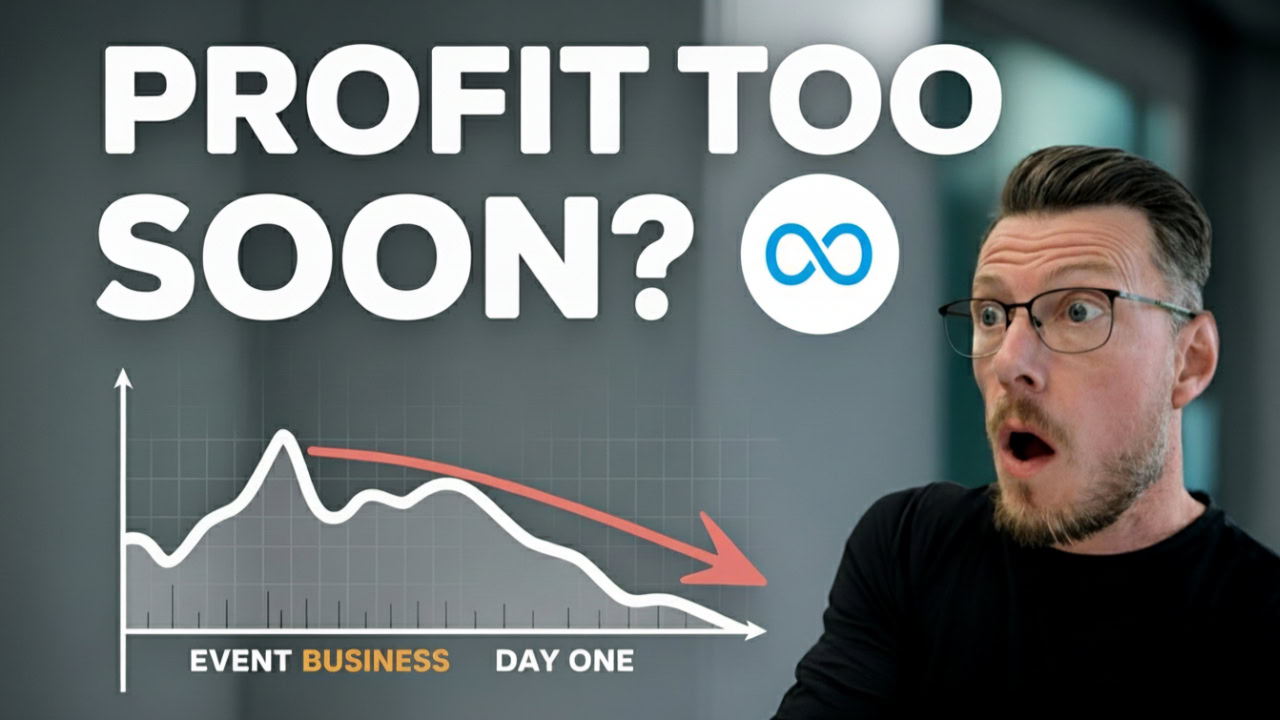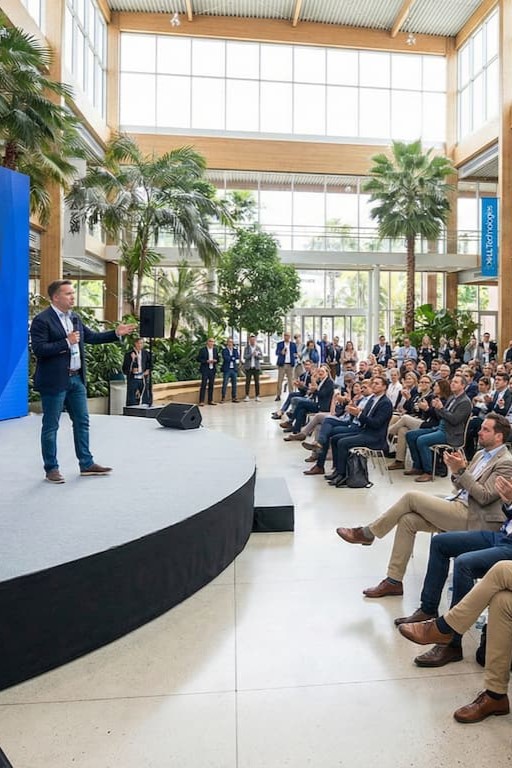Dan Charles
22/09/2025
Table of Contents

Key Takeaways
- Competitive moats require strategic trend positioning 18-24 months before mainstream adoption. Technical capabilities and portfolio strength are becoming commoditized advantages.
- Sustainability demonstrates the pattern perfectly. Businesses that built content authority early now enjoy premium pricing, higher-quality leads, and competitive differentiation that would take years to replicate.
- Four-phase framework works consistently. Market intelligence, content authority building, timing advantage, and sustained commitment create positioning that compounds over time.
- Current opportunities exist in AI personalization, wellness integration, circular economy models, and hybrid experience optimization. The question is which trend aligns best with your expertise and client base.
- Strategic positioning success requires different metrics. Focus on authority indicators, business impact, and strategic asset development rather than traditional marketing measurements alone.
How Forward-Thinking Event Businesses Use Strategic Positioning to Capture Market Leadership
Your biggest competitor just won a contract you thought was yours. The client said they chose them because “they really understand where the industry is heading.” Sound familiar?
While most event businesses compete on price, portfolio, or proximity, the smartest ones are building something far more valuable: competitive moats through strategic trend positioning. They’re not just following industry changes, they’re positioning themselves as the experts who saw them coming.
The difference isn’t luck or timing. It’s systematic intelligence gathering, strategic content creation, and the willingness to take calculated risks on emerging opportunities before they become obvious to everyone else.
Here’s how you can build the same competitive advantages that separate market leaders from market followers.
Understanding Competitive Moats in Event Marketing
A competitive moat isn’t just being good at what you do. It’s creating barriers that make it difficult for competitors to replicate your advantages. In the events industry, the strongest moats come from positioning expertise that’s hard to fake or quickly acquire.
Traditional competitive advantages are becoming commoditized:
- Technical capabilities can be learned or hired
- Industry connections can be built over time
- Portfolio strength can be matched with enough projects
- Even pricing advantages are temporary
But trend positioning creates something different: authentic authority that compounds over time. When you’ve been writing about sustainability for three years while others were ignoring it, corporate event buyers who are now AI power users immediately recognize the depth of your expertise.
This kind of positioning becomes a strategic asset that’s nearly impossible for competitors to replicate quickly.
The Anatomy of Strategic Trend Positioning
Successful trend positioning requires four key components working together:
1. Market Intelligence Systems You need systematic ways to identify emerging trends before they become competitive battlegrounds. This means developing intelligence streams beyond industry publications and competitor watching.
2. Content Authority Building
Creating substantial, valuable content that demonstrates deep understanding of emerging trends. Not surface-level blog posts, but the kind of insights that get bookmarked and shared.
3. Timing Advantage Moving early enough to capture blue ocean benefits, but not so early that the market isn’t ready. The sweet spot is usually 18-24 months before mainstream adoption.
4. Sustained Commitment Trend positioning requires consistent investment even when immediate returns aren’t obvious. This is where most businesses fail, they start but don’t persist through the valley of early adoption.
The Sustainability Success Framework
The sustainability trend provides a perfect case study for how strategic positioning creates competitive moats. Here’s how it unfolded and what it teaches us:
Phase 1: Market Intelligence (2019-2020) Early signals were visible if you knew where to look:
- Corporate ESG reporting requirements expanding
- European regulatory pressure increasing
- Supply chain transparency becoming procurement criteria
Phase 2: Content Authority Building (2021-2022)
While SEO tools showed zero search volume, forward-thinking agencies started creating substantial content about event sustainability practices, measurement frameworks, and implementation strategies.
Phase 3: Market Validation (2023-2024) The trend reached tipping point as sustainability credentials became one of the top three selection criteria for event attendance. Businesses with established content saw massive organic growth.
Phase 4: Competitive Advantage Realization (2024-2025) Today, agencies with established sustainability positioning enjoy significant advantages:
- Higher-quality inbound leads seeking specific expertise
- Premium pricing justified by specialized knowledge
- Faster sales cycles due to pre-established authority
- Competitive differentiation in proposal processes
The key insight: businesses that started building authority in Phase 2 now enjoy moats that would take competitors years to replicate.
Current Emerging Opportunities Worth Monitoring
Based on the same intelligence framework that identified sustainability early, several trends show similar potential for strategic positioning:
AI-Powered Event Personalization Corporate buyers are already AI power users at 58% above average adoption rates. The demand for AI-driven personalization that can boost engagement by over 200% is moving from cutting-edge to requirement.
Wellness Integration Beyond Accessibility The focus on wellness spaces and mental health breaks is expanding into comprehensive wellbeing frameworks for event design.
Circular Economy Event Models Expect rapid growth in events committed to circular economy models, extending material life and maximizing reuse beyond simple sustainability checklists.
Hybrid Experience Optimization With 76% of organizers reporting increased demand for hybrid options, the focus is shifting from basic virtual elements to seamless integrated experiences.
The question isn’t whether these trends will impact your business. It’s whether you’ll build positioning advantage while they’re still emerging opportunities.
Your Strategic Positioning Action Plan
Building competitive moats through trend positioning requires systematic execution across multiple time horizons:
Immediate Actions (Next 30 Days) Audit your current positioning and identify the emerging trend that best aligns with your existing expertise and client base. Choose one trend to focus on rather than trying to capture multiple opportunities.
Short-term Implementation (3-6 Months) Begin substantial content creation around your chosen trend. This means comprehensive guides, framework development, and thought leadership pieces that demonstrate deep understanding, not surface-level coverage.
Medium-term Authority Building (6-18 Months)
Develop proprietary methodologies, measurement frameworks, or implementation systems around your trend focus. This creates intellectual property that competitors can’t easily replicate.
Long-term Competitive Advantage (18+ Months) By this point, your early positioning should be generating qualified leads, industry recognition, and pricing power. You’ll have built a moat that would take new entrants years to bridge.
Common Strategic Positioning Mistakes
Most event businesses fail at trend positioning because they make predictable mistakes:
Mistake 1: Following Instead of Leading Waiting until trends become obvious means competing in red oceans instead of capturing blue ocean advantages.
Mistake 2: Surface-Level Content Creating shallow content that doesn’t demonstrate genuine expertise. Clients can quickly identify businesses that are simply jumping on bandwagons.
Mistake 3: Inconsistent Commitment Starting content creation but abandoning it when immediate results aren’t visible. Campaign scaling decisions require patience with strategic positioning investments.
Mistake 4: Trend Chasing Trying to capture multiple emerging trends instead of building deep authority in one area. Expertise requires focus.
Mistake 5: Ignoring Client Readiness
Moving too early or too late relative to when your ideal clients are ready to value the expertise you’re building.
Measuring Strategic Positioning Success
Traditional marketing metrics don’t capture the full value of competitive moat building. You need different measurement frameworks:
Authority Indicators
- Industry speaking invitations and media mentions
- Inbound inquiry quality and sophistication level
- Competitor reference and citation of your content
- Search ranking improvements for trend-related terms
Business Impact Metrics
- Marketing attribution quality across longer sales cycles
- Premium pricing acceptance rates
- Competitive win rates in qualified opportunities
- Client retention and expansion in trend-related services
Strategic Asset Development
- Content library depth and comprehensiveness
- Proprietary methodology development
- Intellectual property creation
- Industry relationship strength in trend areas
Remember that strategic positioning benefits often appear 12-18 months after initial investments, making patience and consistent measurement crucial.
The Future Belongs to Strategic Positioners
The event industry is experiencing unprecedented change velocity. Sustainability, AI personalization, wellness integration, and circular economy models are just the beginning. The businesses that master strategic trend positioning now will have systematic advantages for capturing future opportunities.
Your competitors are already making choices about which trends to follow and which to ignore. The question is whether you’re building expertise that positions you ahead of market shifts, or waiting until opportunities become competitive necessities.
The most successful event businesses of the next decade won’t be those with the biggest teams or the flashiest portfolios. They’ll be the ones who consistently identify emerging requirements, build authentic expertise, and create content authority that establishes them as the obvious choice when those trends become market demands.
The compass is pointing toward multiple opportunities right now. Strategic positioning gives you the framework to choose wisely and execute effectively.
Ready to build competitive moats through strategic trend positioning? The businesses that master this approach will capture the premium opportunities of the next decade.
Want to identify which emerging trends offer the biggest positioning opportunity for your event business? Book an Evergreen Event Profit System (EEPS) Strategy Call to develop your strategic positioning framework and competitive advantage roadmap.

Why Your Event Business Doesn’t Need More Martech: It Needs a Coherent Message

Universal Attribution for Event Businesses: Track Every Lead Across Any Form Tool

The 4-Phase Event Marketing Timeline System: From Reactive Panic to Predictable Revenue




